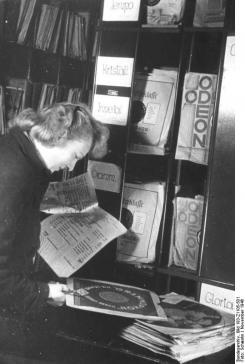In 1930, journalist Hans Tasiemka reported the pioneering introduction of sound recording and archiving at the Berlin Funk-Stunde station, on the initiative of its director Hans Flesch. According to Tasiemka, these “sound documents” (Tondokumente) would enable a collective sonic heritage for future generations, and were essential to the maintenance of a shared memory culture. Taking this ‘archival impulse’ as a departure point, the current project produces the first comprehensive study of the archival and technological practices established in German broadcast institutions from around 1930 to 1960. Correspondingly, it also examines the institutional beginnings of sound archives in Weimar, National Socialist, and postwar broadcast organizations. While these archives might be framed according to distinct breaks in political systems and media organization, the project calls for attention to certain continuities and overlaps in archival practice across the first decades of German broadcasting. The study reveals how the process of producing and archiving radio with wax disc recording (and later magnetic tape) brought about qualitative changes in the live medium of radio. Practices of collecting, ordering, and reusing broadcast sound are considered in terms of specific technological developments, but also in relation to emerging professional sound archival practices. The project places radio archives into a broader context of ongoing negotiations with recorded sound as a form of historical documentation and cultural heritage, and scientific uses of sound archiving in fields such as phonetics, psychology, and musicology.

Berlin 1946: Im Schall-Archiv des Berliner Rundfunks. Bundesarchiv, Bild 183-Z1105-501 / Schwahn / CC-BY-SA
Project
(2013-2015)
